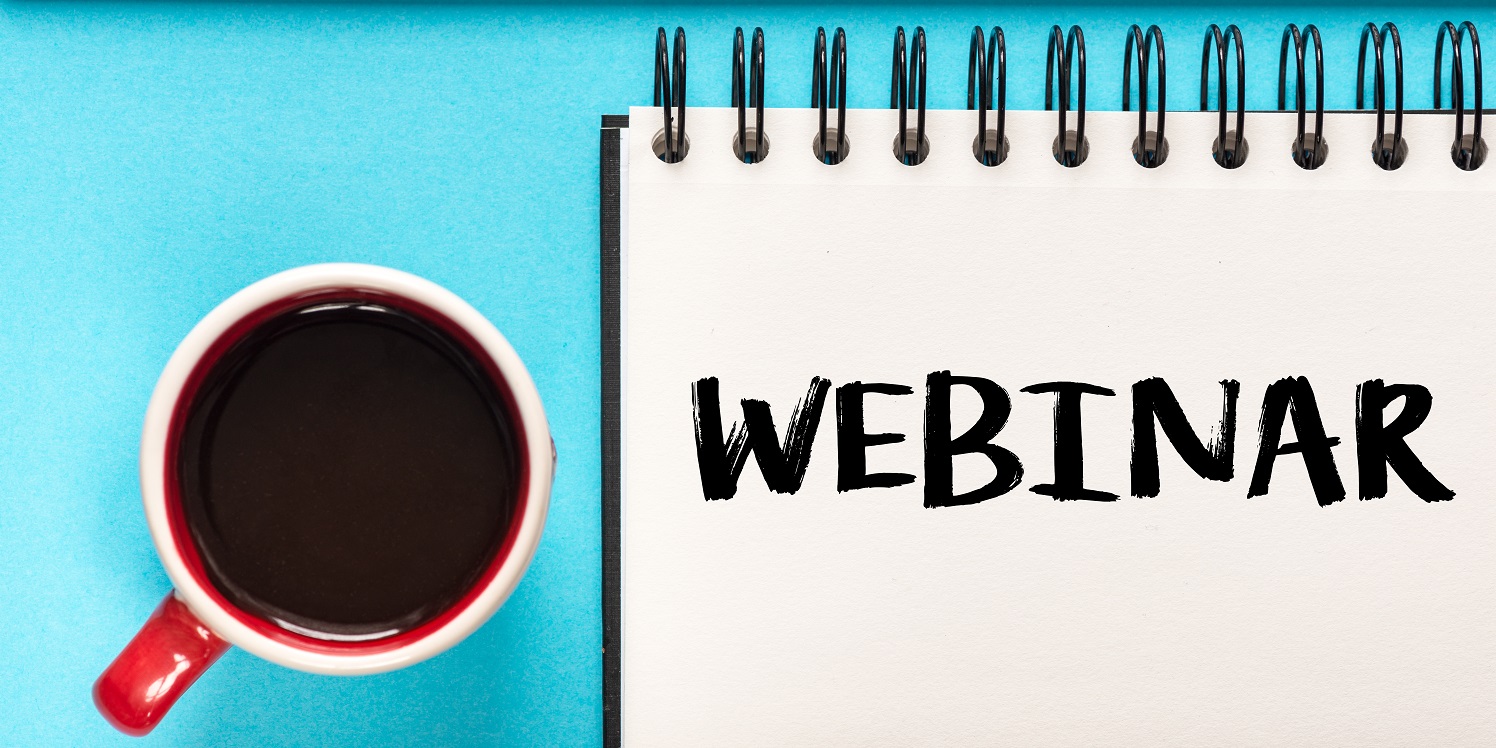Looking to start running webinars or refine your webinar process? Worried about how to get started and use the right techniques as an SME business?
This guide on running engaging webinars is from Camille Brouard, Senior Marketing Executive at myhrtoolkit. Camille has been managing our popular series of HR and business webinars since last year, where we’ve focused on the HR, employment law and business topics that matter to fellow SMEs. Here she runs through tips and tricks on hosting an engaging webinar.
The past year has been a huge learning curve in remote communications for many of us, including the rising popularity of the webinar as a way to inform and connect with our communities. It’s become important for businesses of all sizes to teach their teams virtually or communicate with clients and prospects remotely – the webinar is an ideal channel for providing key learning and that sense of connection.
Tips for running an engaging webinar
In this guide, I’ll focus on the following key areas for running an engaging webinar:
Before the webinar
- Advertising and attracting signups
During the webinar
- Having a smooth and professional presentation style
- Keeping your audience engaged
After the webinar
- What to include in follow up materials
Part 1: Before the webinar
Advertising and attracting signups
Firstly, you can use the best advertising techniques in the world, but if the webinar isn’t of interest to your target audience then it just isn’t going to fly! Choosing the right topics is therefore very important.
Webinar topics
When I’m thinking about webinar topics, firstly I look at what’s timely – for instance, a lot of our webinars in 2020 were (perhaps unsurprisingly) about COVID-19 and workplace issues, such as furlough, redundancy, and remote working.
I consider what questions and worries my audience (in this case, small business owners and HR managers) would have around these topics – and how we can help answer those questions.
Advertising with social media
As for getting your webinar out there, social media is a great resource – I suggest using a scheduler (there are free ones available such as Hootsuite) to schedule social media posts at key points in advance of the webinar, such as 2 weeks out, 1 week out etc, while staying in line with the general guidelines on how frequently you should post on each platform (for example, you should post more frequently on Twitter than you would on LinkedIn or Facebook).
LinkedIn is particularly useful for advertising webinars, as you can create an event on LinkedIn and invite your contacts to attend, as well as messaging contacts directly and making posts with the relevant hashtags. You can also post in groups; there are plenty of LinkedIn groups out there for a range of business topics.
Email contacts and mailing lists
You can also make great use of your current contacts by sending out mailshots – it’s even better if you can build up a mailing list of previous webinar attendees so that you can keep in touch with them and alert them to subsequent webinars and other resources, keeping them engaged.
Guest speakers
You don’t have to do all the work yourself! Another way to get the word out there about your webinars is to invite guest speakers and encourage them to share the webinar on their networks too, so you have more reach. Plus, having guest speakers means you can bring in topics outside of your direct expertise that will appeal to your intended audience.
Part 2: During the webinar
Having a smooth and professional presentation style
Now let’s move further in time towards the webinar itself. Having a smooth and professional presentation style will help you set the tone of the webinar and capture the audience’s attention.
Practice call
I advise having a practice call before each webinar, especially if multiple people are going to be speaking on the webinar – and even moreso if you’re having a guest speaker on the day.
A practice call helps you iron out any technical issues in advance, as everyone can test that they know how to get on the webinar, that their mic and camera are working, and that they can share their slides if needed.
Test music
On the subject of testing, you need to make sure your attendees can hear you as well! On the webinar itself, I advise playing music or chatting to attendees on mic before the webinar officially starts to make sure everything is working their end. Of course, you’ll also have to post on the chat that you’re testing audio, so that any attendees who can’t hear you are aware.
Don’t panic!
If something does go wrong, in the words of the Hitchhiker’s Guide to the Galaxy: don’t panic! Sometimes your internet drops, or you’re presenting at home and your pets, kids, or neighbours decide it’s the best time to start making a racket. Your attendees will understand, just let them know about the issue as soon as possible and an estimate on how long it’ll take to rectify it.
Introducing the webinar
Let’s move onto your webinar introduction, which is important for setting the tone! I advise using a script when you introduce the webinar, as there is plenty of handy information you may forget to mention once you’re speaking in front of a crowd of (online) people.
Also, make sure to mention your next webinar at the start because some attendees will drop out of the webinar once the main speaker has finished.
Your presentation
Here are some quick tips for keeping your slideshow presentation smooth:
- Provide minimal information (so your audience are not just reading slides) and use text large enough to be read on smaller screens.
- Use images and change them regularly to keep attention.
- Subtle animation only! Having your points come in one by one can help maintain audience focus on the information at hand.
- In terms of structure: summarise your presentation, go through your points in order, then summarise again to reinforce what the attendees have learned.
- Use branded elements (e.g. brand colours, your logo) and contact information.
- However, make sure you’re not overselling – the webinar should be providing value to the audience, so keep the sales messaging light.
- If you have a guest speaker: do they want to present their own slides or will you? (You can address this during the practice call).

Keeping your audience engaged
Beyond having a brilliant topic and presentation, there are other techniques you can use to keep your audience engaged throughout the webinar.
Using the chat
It’s a simple but effective technique. Throughout the webinar, you should be asking attendees to answer your questions in the chat so they are continually getting involved.
When you read through the answers, make sure to namecheck them so they know you’ve seen their comments and are interacting. Just use first names so it doesn’t become a privacy issue (and be very careful not to make anyone identifiable).
Polls
Another great way to ask questions of your audience is through conducting polls. This helps you get more of an idea of where your audience is at and what they want to learn about, forming more of a personal connection. Most webinar platforms have their own polling functionality.
Q&A
At the end of the webinar, it’s great to have time for a Q&A (as a yardstick, make it last about half the time of the presentation). This helps further the audience’s knowledge and give attendees a more direct benefit for attending the webinar, as their specific questions are answered. If you’re using Zoom, there’s dedicated Q&A functionality that makes it easier to sort through questions.
Read each question out before answering it so everyone knows what’s being discussed and, as with the chat, namecheck the people who ask questions (again, first names only and avoid reading out information that would make the person clearly identifiable).
Just in case you’re short on questions, it’s good to have backup questions ready to discuss. You can also ask for audience questions ahead of time to make sure you have some at the start of the Q&A.
Part 3: After the webinar
Follow-up materials
Follow-up materials can be hugely helpful for reinforcing attendee learning and getting the most out of your content in terms of engagement. I recommend emailing attendees and non-attendees with follow-up materials (by thanking them for registering, you can easily address both groups within a single email). Some examples for what you can use include:
- Access to a webinar recording (this is especially useful for non-attendees).
- Articles on/related to the topic if you have the internal resources available.
- Useful external resources (such as materials you used in researching your webinar topic or extra reading ideas).
- Your next webinar! Keep people in the loop by encouraging them to sign up for your future webinars.
Related guides

Written by Camille Brouard
Camille is a Senior Marketing Executive for myhrtoolkit who writes on topics including HR technology, workplace culture, leave management, diversity, and mental health at work.


 Holiday Planner
Holiday Planner Absence Management
Absence Management Performance Management
Performance Management Staff Management
Staff Management Document Management
Document Management Reporting
Reporting Health and Safety Management
Health and Safety Management Task Management
Task Management Security Centre
Security Centre Self Service
Self Service Mobile
Mobile






